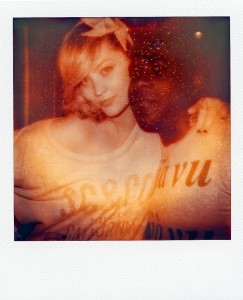 When the first batch of Impossible PX films were available I couldn’t wait to get my hands on them. That was about 4 months ago. I’m more than happy to support a project that will bring back instant photography and give those Polaroid cameras a new lease on life.
When the first batch of Impossible PX films were available I couldn’t wait to get my hands on them. That was about 4 months ago. I’m more than happy to support a project that will bring back instant photography and give those Polaroid cameras a new lease on life.
We were made aware that
- colours wouldn’t be stable
- the pictures would change over time
- pictures were still sensitive to light when they come out
- pictures were sensitive to temperature
and much more. What we as users (and Impossible) didn’t know was that those early pictures would DESTROY themselves after only a few months.
All of my pictures suffer some something called The Killer Crystal.
Killer What?
The Impossible Killer Crystal is a phrase conied by Florian Kaps to describe this image eating extravaganza. It’s caused by moisture trapped inside the picture. The phenomenon only affects PX600 images – PX100 stock doesn’t seem to be affected, as all my PX100 pictures still look as I remember them.
This is obviously not such good news for me. Nor is it for Polaroid users or The Impossible Project. It’s the second major hurdle they had to face, right after the “glue comes off the pictures” tragedy not too long ago.
Let’s have a look at a few examples:


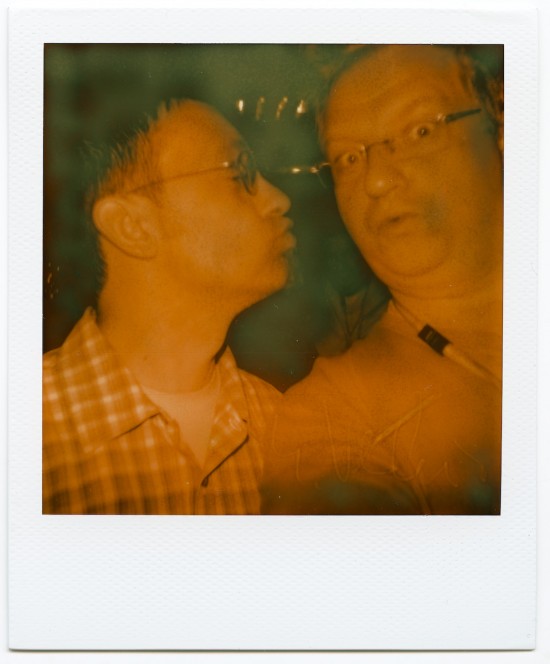

How can this happen?
It looks like the picture just keeps developing until the chemicals are exhausted. Literally all the detail is gone and the pictures turn much brighter than they once were.
This phenomenon doesn’t happen over night, it took me some time to notice the shift. Other than the colours, we can see several other effects in the pictures over time:
- white little specs
- some cloud structure
- and a crystal growing and spreading
Literally all pictures I took on this material have some or all of these defects. Note that the PX100 First Flush does not seem to have this problem! My PX100 pictures are as good as they were on day 1.
Impossible have announced that this is due to moisture being trapped inside each picture, so the chemicals keep doing nasty things. They were meant to dry completely and hence stop any reaction.
To prove our theory, we need to take a look inside an affected picture. Let’s start with the
Anatomy of a Polaroid

This picture shows the back of a Polaroid/Impossible picture and describes each part.
As you may have guessed, some kind of liquid is involved in bringing an instant picture to life. It’s not developer as such, it’s an “activation paste” that kicks off a chemical reaction to develop and fix the picture on the inside.
For this to happen, your picture is being squeezed through two tight metal rollers in the camera, a process which spreads said paste from the bottom (wide bit) towards the top. When the paste reaches the top, an internal foam strip will take up the excess.
Once the process has finished, the paste dries – in theory this should happen after about 10mins to 1 hour, but in reality it takes up to 24 hours, sometimes longer. With Impossible films that paste is blue (that’s why the pictures are blue when they come out) and it turns white when it’s dry.
Moisture is supposed to get out via two areas at the top (air vents) where the white foil is deliberately not glued to the picture. Original Polaroids work the same way, so do Fuji Instax pictures.
The Problem
The middle part of the picture has the biggest trouble drying properly. To illustrate this, I’ve taken this picture of Freddie apart.




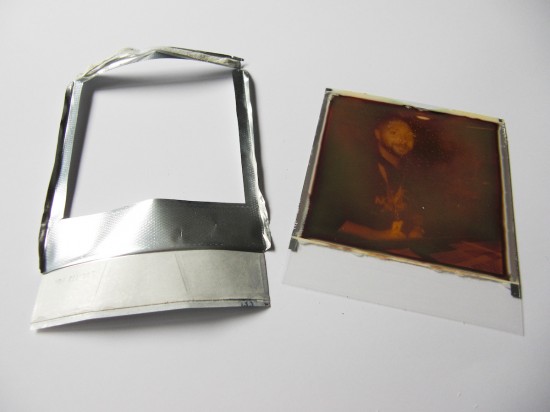
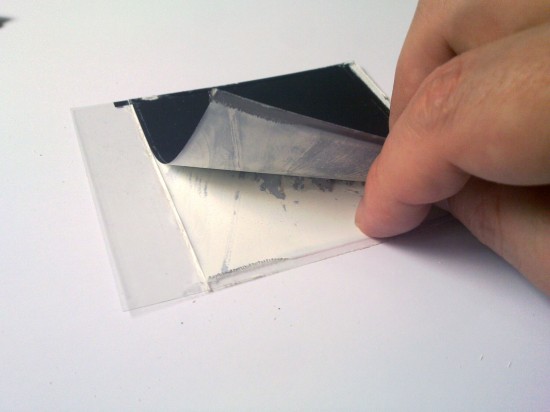
Moisture seems to be present in the picture – hence some of the picture is stuck on the mylar. I had to destroy Freddie’s picture completely (sorry Freddie!)
I have noticed that the moist part of the gelatin doesn’t actually dry for a good few hours… if this paste has trouble drying without mylar, I bet it’s near enough impossible for it to dry when its enclosed within the picture.
But how do we fight the Killer Crystal, Cap’n?

There are several solutions on the Impossible website:
- cut another air vent on the back
- peel the image apart
- store your pictures with Silica Gel packets in a closed box
I have to be honest with you here: none of these emergency solutions have turned out to stop my pictures from deteriorating.
As for “peeling the image apart”, let me show you the picture below – it’s just not an option. You’ll end up ripping it apart. We like experiments, but this can’t really be a serious suggestion:
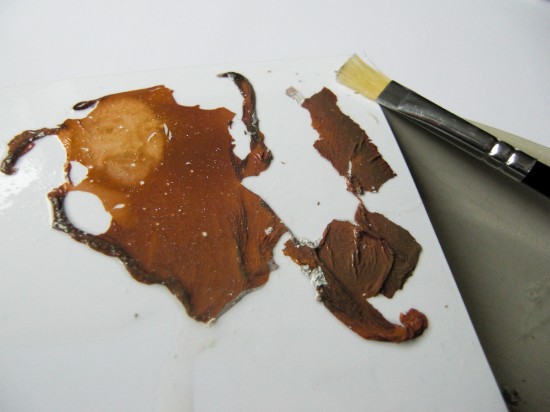
What to do
Luckily, Impossible are aware of this problem. Don’t hesitate to get in touch with them and ask for a refund if you have unopened packets of the film.
I was assured that a new generation of PX600 is about to hit the market (called UV+). I also have a packet of PX600 “Generation Six” here which I’ll test to see if the problems have gone away. Knowing Impossible, they are on the case and they’re as unhappy about this as the rest of us.
Further Reading
- The Impossible Project website
- Thomas’ Article on Photography247
- Mad Orange Fool’s User Experience with PX600